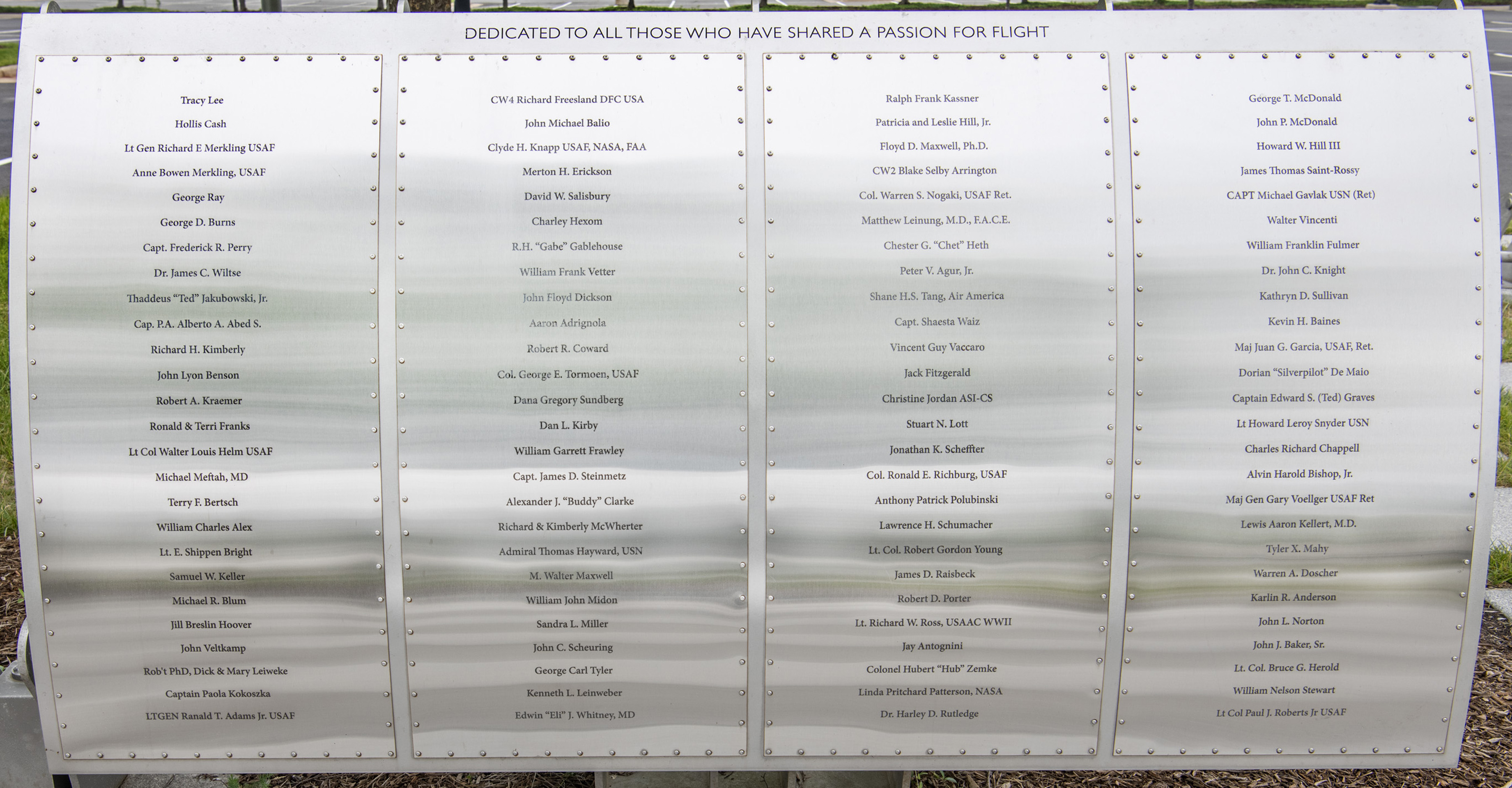Foil: 41 Panel: 4 Column: 1 Line: 6
Wall of Honor Level: Air and Space Leader
Honored by:
Crispin Vincenti-Brown
Walter Guido Vincenti, emeritus professor of Aeronautics and Astronautics. was born April 20, 1917, in Baltimore, Maryland to Italian immigrants. He was raised in Pasadena, California. He attended Stanford for both undergraduate and graduate schools, earning an AB in engineering in 1938 and an Engineer’s degree in 1940.
After graduation Vincenti went to work at the NACA’s new aeronautics research facility, Ames Aeronautical laboratory, at Moffett Field. He led the new 1-by-3-foot supersonic wind tunnel team. Vincenti unified the existing theories into one mathematical model that predicted the flow of air around a wing at speeds near the sound barrier. HIs formulas predicted the pressure, density, and velocity at hundreds of thousands of points in the airflow field around the wing. He won the Pi Tau Sigma Gold Medal , from the National Mechanical Engineering Honor Society in 1951, and a Rockefeller Public Service Award in 1956.
Vincenti’s work in aerodynamic theory brought him to the attention of Stanford University, and in 1957 he was offered a full professorship and tasked with re-invigorating the department of aeronautics and astronautics. His teaching, research, and writing focused on physical gas dynamics, the theory of flow around re-entry vehicles. Vincenti built a hypersonic wind tunnel at Stanford and co-authored the textbook, “Introduction to Physical Gas Dynamics” in 1965.
In the early 1970s, Vincenti started a second illustrious career in the history of technology. He founded an interdisciplinary program called VTS (Values, Technology, and Society), now called STS (Science, Technology, and Society). He started researching and writing in history and in 1990 published “What Engineers Know and How They Know It”. Through a series of case studies, the book illuminates the processes of engineering epistemology. The Society for the History of Technology awarded Vincenti both the prize for best book, and, in 1998, the Leonardo da Vinci medal for lifetime achievement in the understanding of technology’s past.
In 1983, Vincenti was given the Lloyd W. Dinkelspiel Award for “Outstanding Service to Undergraduate Education”. The citation is “For the uncluttered vision and the clarity of intellect this aeronautical engineer has brought to the epistemology of technology; for a devotion to students and a skill as a teacher so extraordinary that he is called saint by some, moving spirit by others, and teachers’ teacher by his colleagues; and for the courage and imagination that enabled him, a dozen years ago, to give up a discipline in which he had attained distinction in order to lend that distinction to another”.
Vincenti was elected to the National Academy of Engineering in 1987, “for pioneering contributions to supersonic aircraft aerodynamics and to fundamental understanding of the physical gas dynamics of hypersonic flow”.
In 2016, Vincenti was awarded the Guggenheim Medal, perhaps the premier recognition for a lifetime of achievement in the advancement of aeronautics. The award donors his “seminal pioneering supersonic wind tunnel research, education in high temperature gas dynamics, and exceptional contributions to the history of engineering technology”.
Approaching his 102nd birthday, Vincenti still lives in sight of the Hoover Tower. He is to be seen on the campus, asking questions of himself and all those around him on subjects even broader than those of his career to date.
Wall of Honor profiles are provided by the honoree or the donor who added their name to the Wall of Honor. The Museum cannot validate all facts contained in the profiles.
Foil: 41
